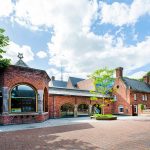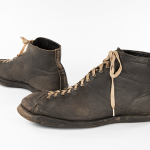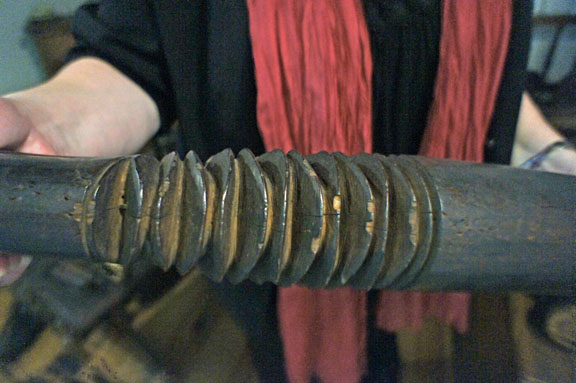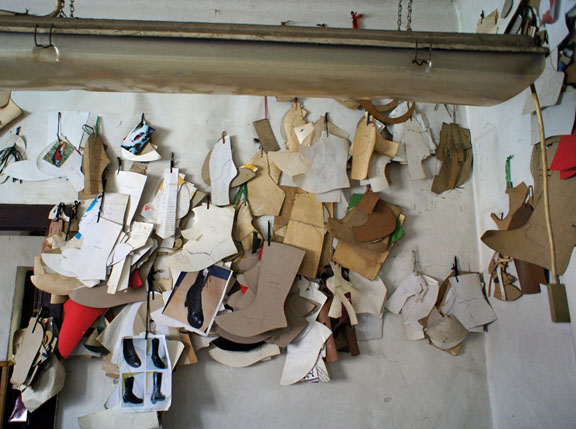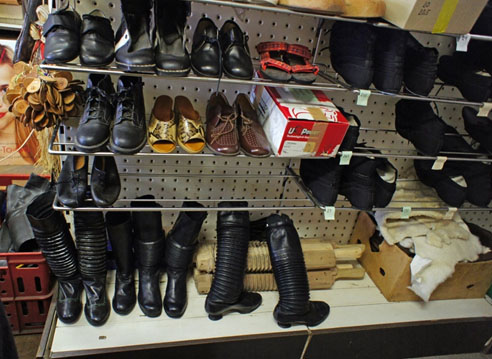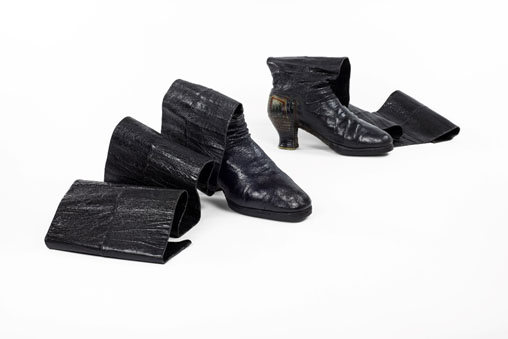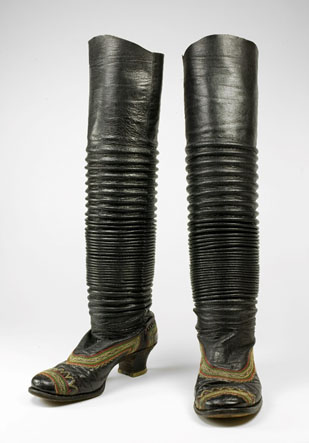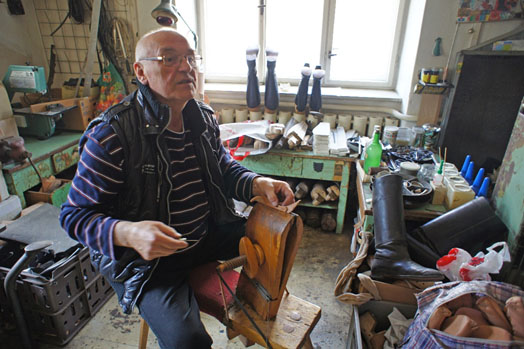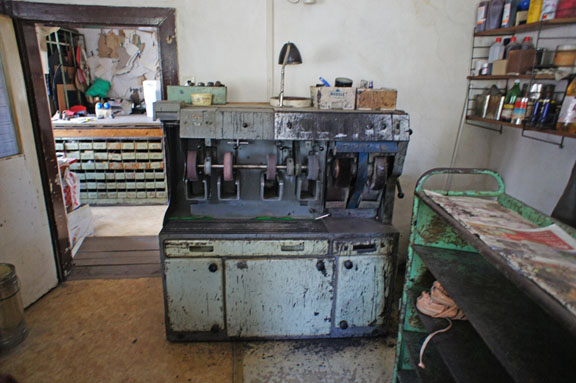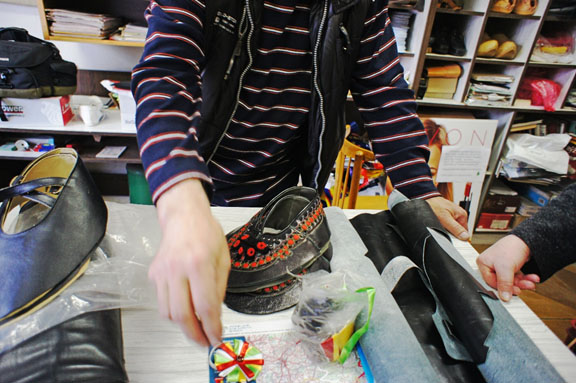Since we’re all stuck at home these days, I thought I’d jump into the way-back machine and visit 2011. I have been incredibly fortunate to be able to travel with work, whether it takes me to an international conference or somewhere new to install a traveling exhibition.
In April 2011, I went to the Czech Republic to install an exhibition for the Bata Shoe Museum (BSM) at the Egon Schiele Art Centrum in Český Krumlov. The first two days I spent in the industrial city of Zlín, where the Bata Shoe Company started in 1894. One of the days was spent in the company of staff who worked at the City run Shoe Museum near the Thomas Bata University.
The display area, which is housed on a floor of an old Bata factory, has a retrospective of Western fashion foot, including a significant section about the old Bata company and the footwear manufactured there. One corner of the museum housed a shoemaker’s shop complete with tools including this form used in making traditional Moravian folkloric footwear.
After visiting the museum, we drove to meet a shoemaker in a very small town northeast of Zlín called Kelč. The shoemaker had learned his craft as a teenager and had been making traditional Bohemian, Moravian, Slovakian and other regional special occasion boots and shoes for local folkloric dance troupes for more than 50 years. His shop was filled with all kinds of machinery and the walls were covered with a multitude of paper pattern pieces.
One style of women’s boots involves accordion pleating of the boot shaft, made from an extended length of leather. The BSM has several pairs in its collection and the method of achieving this effect had always been a mystery.
The vamp of the boot is hand embroidered, the components are sewn together and then the upper is lasted to the sole; the final stage is pleating the leather. The leather of the boot shaft, which can measure up to 80cm, is wetted thoroughly along with an application of a water soluble adhesive (or size). The carved, deeply notched wooden form is pushed into the boot until it rests on the insole. Then the wet leather is pulled down over the form, wedging the excess leather into the recesses of the form until the entire length has been creased into place.
The boots are left until the leather is completely dry. When the form is pulled out of the boot, the shaft retains its permanent accordion pleating with the finished height measuring around 50cm. Brass nails were hammered into the heel in a decorative pattern. These beautifully embellished boots complement an even more elaborate outfit that is decorated with fabulous embroidery, multiple colourful ribbons and layers of starched lace.

